
Hashigo-nori 2026
Japan TravelHashigo-nori is a traditional performance that attempts to pass on the techniques and methods of fireman in the Edo period.

Ikegami Honmon-ji is a temple of the Buddhist sect Nichiren Shū south of Tokyo, which was built where the founder of the Nichiren sect is said to have died. Nichiren's disciple Nikko also spent the rest of his life in this temple. On the site of the temple is also the administrative seat of Nichiren Shū.
A short walk from Ikegami Station or Nishi-Magome Station, Ikegami Honmon-ji is home to a number of buildings, most of which were reconstructed after the March 15, 1945 bombing. These include the five-storey pagoda, built in 1608, which is recognized as an important cultural asset. The kyōzō pagoda, built in 1784, is a repository of religious writings and the hōtō pagoda, built in 1781, where Nichiren was cremated. Other buildings have been rebuilt or rebuilt since 1945.

Hashigo-nori is a traditional performance that attempts to pass on the techniques and methods of fireman in the Edo period.

Find out how to join in one of Tokyo's largest Setsubun Festivals and celebrate traditional Spring like a local. Beans, good fortune, and demons await.
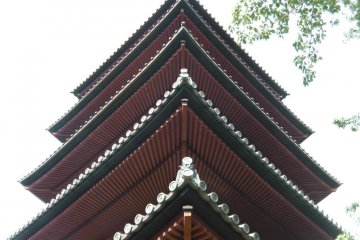
Ikegami Honmonji is an incredibly beautiful Buddhist temple widely spread across the top of a hill in Tokyo's Ota Ward. It contains the oldest 5 story pagoda in Kanto.

Oeshiki is an annual festival at Tokyo's Ikegami Honmonji temple. Held to honor the death of Saint Nichiren, 300,000 people flock to the temple to witness a festival parade leading from the train station to the temple, which is lit up and active until all hours of the night.

Ikegami Honmonji Oeshiki Festival is one of Tokyo’s most famous and memorable festivals, with a history dating back more than 730 years.
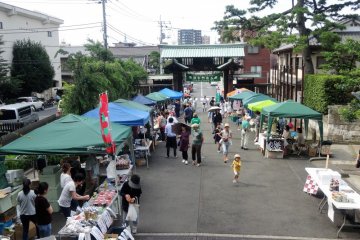
Try the fresh, locally produced vegetables and fruits at farmer's market at Ikegami Honmonji temple.

Find out how to join in one of Tokyo's largest Setsubun Festivals and celebrate traditional Spring like a local. Beans, good fortune, and demons await.

Ota City's Ikegami Honmon-ji is a less crowded alternative for cherry blossom viewing in Tokyo.

Five hundred wind chimes are strung across the temple grounds of Ikegami Honmonji at the top of the long staircase that leads to the Niomon Gate.

Hashigo-nori is a traditional performance that attempts to pass on the techniques and methods of fireman in the Edo period.

Check out one of Tokyo's Oeshiki celebrations for an insight into a 700 year tradition and vibrant Japanese culture.
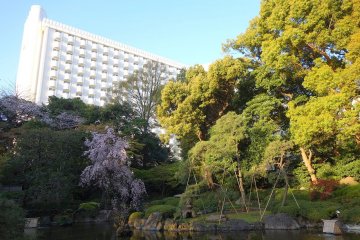
Just minutes from Shinagawa Station, the Grand Prince Hotel New Takanawa is surrounded by lush greenery in the Takanawa area, with rooms offering balcony views of the nearby gardens and the surrounding Tokyo cityscape. This urban resort features convention facilities like the Hiten banquet hall, the international Convention Center Pamir, as well as a wide variety of Japanese, Chinese and Western restaurants.

ANA Holiday Inn Tokyo Bay (previously Dai-ichi Hotel Tokyo Seafort) is a 132-room hotel that will provide visitors to Japan’s capital city with an attractive, fresh option in the midscale space. ANA Holiday Inn Tokyo Bay will join a strong portfolio of 10 ANA Holiday Inn open and pipeline hotels across Japan, and become part of the brand’s global footprint of 1,234 open hotels and 278 pipeline properties.
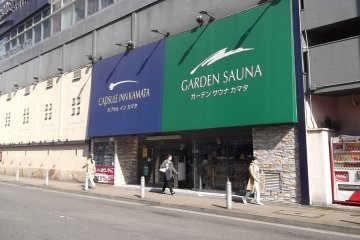
Convenient for Tokyo's Haneda Airport, Capsule Inn Kamata is an affordable, well equipped capsule hotel, a uniquely Japanese accommodation experience.
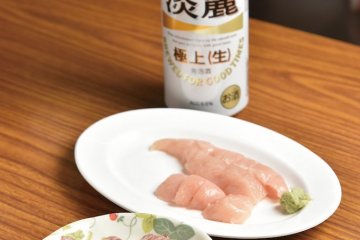
Customers constantly flock to this standing bar operated by a butcher as soon as the doors open. You can choose what you like from the showcased meat dishes and get a beer out of the fridge yourself.

You'll love the cheap meals at this famous standing bar with branches now located throughout Japan. One person can leave satisfied for just ¥1,000. The secret to its popularity is its quality, with meals cooked at the restaurant using minimal premade food.

Opened in 2017. This is a bar equipped with a wine cellar, which offers craft beers as well as over 30 types of craft gin, alongside a regular dining menu.

Kinema Omori is the first cinema complex to open in Japan. For this reason, and in order to preserve the entire history of the film, not only are numerous classic Japanese films shown. Well-known films of early black and white cinema are regularly shown shown, but also lesser-known films that are popular with arthouse cinema lovers. The current and future program can easily be found on the official website. Tickets cannot be reserved in advance, but must be purchased on the day of the performance.

The shopping building is right in front of you as you come out of Omori Station. It sells food, everyday items, fashion, medicine, and more. Electrical appliiances and other specialty stores are on 3F and 4F and restaurants and cinema are on 5F.

Shinagawa Aquarium (しながわ水族館), is a middle sized aquarium featuring an underwater tunnel.